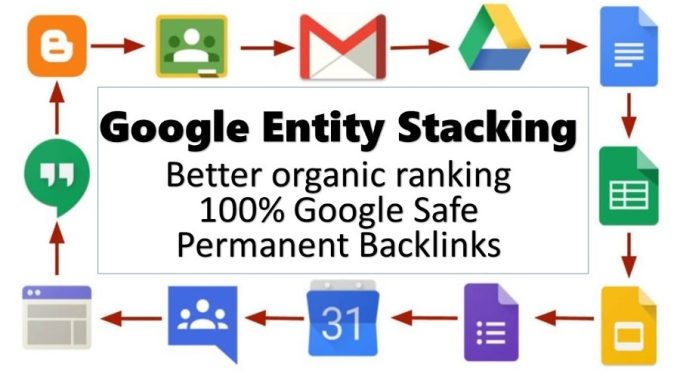In the digital landscape, establishing a strong online presence is paramount for businesses, brands, and individuals alike. Google Entity Stacks, also known as Knowledge Graph Stacks or Brand Stacks, offer a powerful strategy to enhance visibility and authority on the web. In this comprehensive guide, we will delve into the concept of Google Entity Stacks, their significance, and provide a detailed step-by-step tutorial on how to create and optimize them effectively.
- Understanding Google Entity Stacks:
- Definition: Google Entity Stacks are collections of digital entities, including websites, social media profiles, images, videos, and other online assets, associated with a particular entity or brand.
- Significance: Google Entity Stacks enhance online presence, improve brand visibility, and contribute to knowledge graph recognition, resulting in higher search engine rankings and credibility.
- Components: Key components of Google Entity Stacks include websites, social media profiles, knowledge panels, images, videos, and relevant content.
- Identifying Your Entity:
- Define Your Entity: Identify the primary entity or brand you want to create a Google Entity Stack for. This could be a business, organization, individual, or any other entity with an online presence.
- Research: Conduct thorough research to understand the existing online presence of your entity, including websites, social media profiles, directories, and other digital assets.
- Creating Google Entity Stack Components: a. Websites:
- Purchase a Domain: Choose a domain name that reflects your entity or brand identity.
- Website Design: Develop a professional website with user-friendly navigation, relevant content, and optimized for search engines.
- On-page SEO: Implement on-page SEO techniques including keyword optimization, meta tags, and structured data markup. b. Social Media Profiles:
- Create Profiles: Establish active profiles on major social media platforms such as Facebook, Twitter, LinkedIn, Instagram, and YouTube.
- Brand Consistency: Maintain consistent branding across all social media profiles including profile images, cover photos, and descriptions.
- Engagement: Actively engage with your audience through regular posts, updates, and interactions. c. Knowledge Panels:
- Claim Knowledge Panel: If eligible, claim ownership of the knowledge panel associated with your entity.
- Verification: Verify your entity’s information with Google through official channels such as Google My Business or Knowledge Panel Verification.
- Optimization: Optimize your knowledge panel with accurate and up-to-date information including entity description, contact details, and relevant links. d. Images and Videos:
- Image Optimization: Optimize images with descriptive filenames, alt tags, and relevant captions. Submit images to Google Images for indexing.
- Video Creation: Create high-quality videos related to your entity or brand and publish them on platforms like YouTube, optimizing titles, descriptions, and tags for search. e. Content Creation:
- Blogging: Start a blog related to your entity’s niche or industry and regularly publish informative and engaging content.
- Guest Posting: Contribute guest posts to reputable websites within your industry to expand your reach and authority.
- Content Optimization: Optimize content for relevant keywords, user intent, and readability.
- Integrating Components into Google Entity Stack:
- Link Building: Interlink various components of your Google Entity Stack including websites, social media profiles, and content assets to establish a cohesive digital ecosystem.
- Cross-Promotion: Promote your Google Entity Stack components across different platforms to increase visibility and engagement.
- Monitoring and Maintenance: Regularly monitor the performance of your Google Entity Stack components, update information as needed, and adapt strategies based on analytics data.
- Advanced Optimization Strategies:
- Schema Markup: Implement schema markup to provide search engines with structured data about your entity, improving visibility in search results.
- Entity Authority Building: Build authority for your entity by earning backlinks from reputable websites, enhancing trustworthiness and relevance.
- Local SEO: Implement local SEO strategies to optimize your entity’s presence for location-based searches, especially relevant for businesses targeting local markets.
- Measuring Success:
- Key Performance Indicators (KPIs): Track relevant KPIs such as search engine rankings, website traffic, social media engagement, and knowledge panel impressions.
- Analytics Tools: Utilize tools such as Google Analytics, Google Search Console, and social media analytics platforms to gain insights into the performance of your Google Entity Stack.
- Iterative Improvement: Continuously analyze data and iterate your Google Entity Stack strategies to improve performance and achieve long-term success.
- Conclusion:
- Recap: Google Entity Stacks are powerful tools for enhancing online visibility, authority, and credibility for entities and brands.
- Implementation: By following the step-by-step tutorial provided in this guide and consistently optimizing your Google Entity Stack components, you can effectively improve your entity’s digital presence and achieve your online goals.
- Future Outlook: As search engine algorithms evolve, staying updated with the latest trends and best practices in Google Entity Stack optimization will be crucial for maintaining competitiveness and relevance in the digital landscape.
By following the comprehensive tutorial outlined in this guide, you can create and optimize Google Entity Stacks effectively, driving greater visibility, credibility, and success for your entity or brand in the online world.




